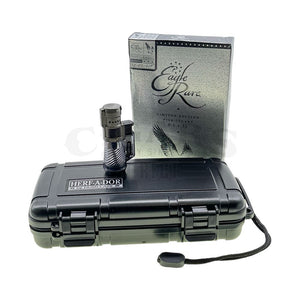Cigars and Taxes: 1863 to 1868
Share
Congress, when the country is in debt, has never hesitated to tax that which is popular. Think of the high taxes today on gasoline, alcohol and tobacco products.
The Civil War created heavy debt. At the same time, a cigar boom was in full swing in the United States. One indication of the popularity of stogies during this time was that Union General U.S. Grant was sent 10,000 boxes of them following the North’s victory at Shiloh in 1863.
Seeing dollar signs where most were seeing enjoyment and relaxation, Congress passed several bills levying taxes on cigars. It was very difficult to calculate taxes based on the inventory – the cigar manufacturers would claim those sticks had been counted the last time the tax man came, and since most of the IRS agents were not experts in cigars, they couldn’t really tell what was going on.
So, in 1864, Congress passed further legislation requiring cigars to be packaged in boxes or bundles in order to be more easily counted. This was further regulated in 1865 with laws requiring set numbers of cigars in boxes or bundles: 25, 50, 100, 250 and 500.
In passing these regulations, cigars became the first consumer products to have federally mandated packing sizes. Prior to this regulation, less than 10% of cigars were delivered to the consumer in full boxes. Most were shipped in crates to retailers who displayed them in bins or boxes from which singles were sold.
All boxes and bundles had to be secured with a stamp indicating that the proper taxes had been paid on the package. The taxes were outrageously high. Cigars that sold two for a penny had one cent per stick in taxes added to them. Those two cigars suddenly cost three cents!
Imagine the cost of your favorite smokes increasing by 200%. You might still pay $30 for an Alec Bradley Prensado, but how many would you smoke? How much would your enjoyment be reduced by the increased cost of the cigar?
Think about these prices: $26 for an Ashton Aged Maduro, $21 for a Don Pepin Garcia Blue or $60 for a Padrón 1964 Anny! Yowzah! Those figures make current prices look pretty good.
Revenue agents would sell the stamps to the manufacturers who were required to seal the box with them. The retailer was ordered to break the seal and not use the box to ship cigars again.
Similar laws remained in effect for more than 100 years!














